Is Your Stretching Regimen Helping or Harming You?
Stretching is a common prescription to help with back pain. At https://www.healthoutcome.org, the world’s first crowdsourcing platform to rate medical interventions, stretching is the 6th most commonly used intervention, after physical therapy, NSAIDs, heat, rest, and cortisone injections. On a scale from 0-5, stretching (rated 2.6) is the 5th most highly rated intervention after Postural Modification (3.8), Yoga (3.1), Supplements (2.9), Weight Loss (2.8), and Meditation (2.7).
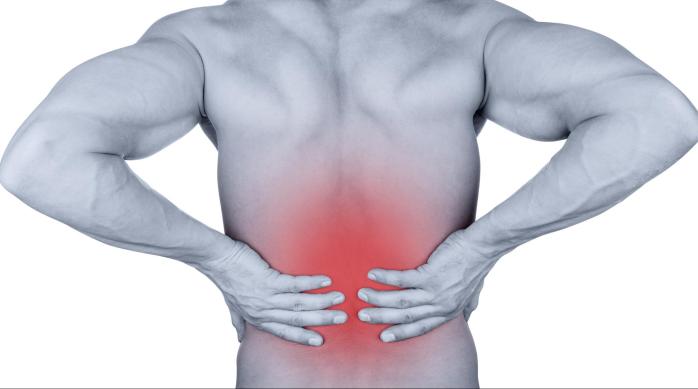
Back pain caused by tight muscles is common
The Gokhale Method considers stretching to be one of many essential pieces in solving most people’s back problems. Even though stretching alone cannot give an equivalent result to that of a well-crafted Postural Modification approach, it is a good thing, and if slightly tweaked, could give better satisfaction and results in less time. If done poorly, on the other hand, stretching can harm, rather than help you.
A few key concepts that can help your approach to stretching are:
Your hunter gatherer ancestors, with whom you share the vast majority of your genes, didn’t do stretches per se. In the course of their daily activities, their bodies were self-stretching, self-maintaining, and mostly, self-healing. It’s true our lifestyles are different from theirs, but this realization should provoke some enquiry about small modifications in our ways of moving that would enable us, too, to be as efficiently and effectively stretched out as our ancestors were.
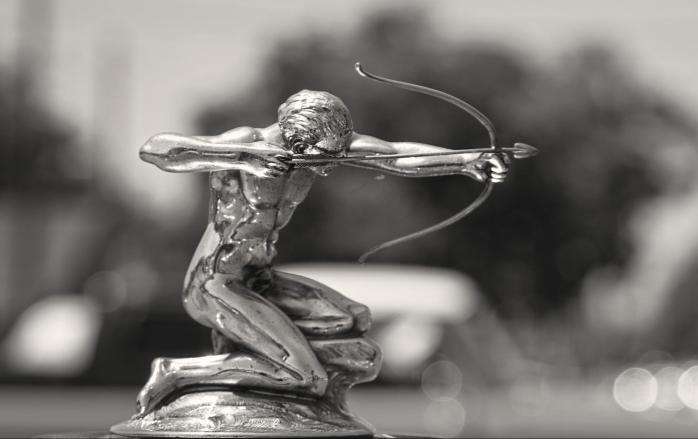
This hunter gets a natural shoulder stretch from using a bow and arrow
Not every muscle in your body needs to be super flexible. Unless you’re a gymnast or yogi, some stiffness here and there is well-tolerated, and can be beneficial when there isn’t great strength to balance extreme flexibility.
Flexibility is very useful in the following muscles: hamstrings (allows pelvic anteversion and hip-hinging), psoas (allows a full length stride without a swayback), external hip rotators (allows deep hip-hinging), pecs and traps (allows normal shoulder alignment and prevents pathology in the shoulder, facilitates good range-of-motion for the arms), and calves (allows the heels to remain on the ground for an extended time in a stride).
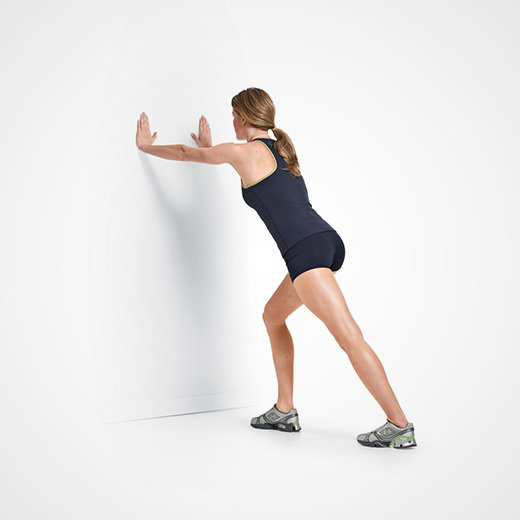
Calf stretches can help achieve a healthy stride
The reason these flexibilities are useful is that they facilitate normal human movement, which also gives a clue on to how to keep these flexibilities: PERFORM NORMAL HUMAN MOVEMENT! Hip-hinge well, stride well, maintain shoulder alignment well while moving the arms extensively, etc., and you’ll be largely covered for flexibility.
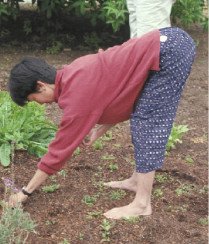
Hip-hinging in the garden keeps hamstrings flexible

Actor Shemar Moore keeps his shoulders rolled back when playing on the beach with some spare children
If your day does not include enough movement, supplement with a few, well-chosen stretches. It’s extremely efficient to do several stretches simultaneously. It’s even more efficient if you combine this with strengthening several muscles simultaneously.
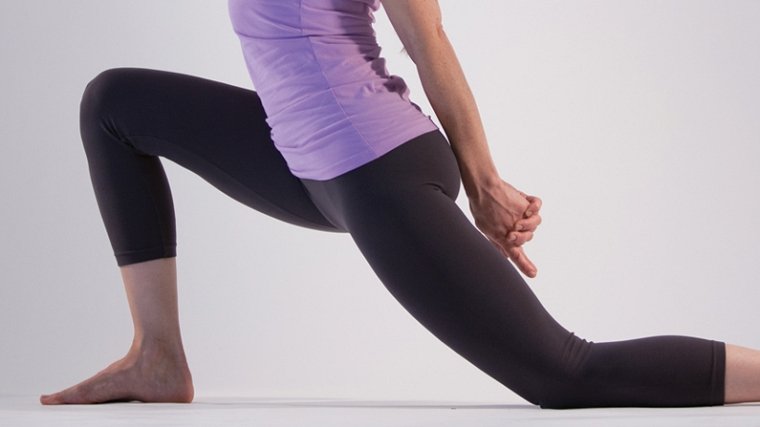
Stretching the psoas (enables a healthy stride) and pecs, while strengthening the quads
Yoga and dance are two approaches to exercise that are especially efficient and effective for satisfying stretch (and strengthening) needs. Most approaches to yoga and dance could use some tweaking to “do no harm” and do more good, but it’s hard to match the possibilities with these traditional, multi-faceted, tried and true practices.
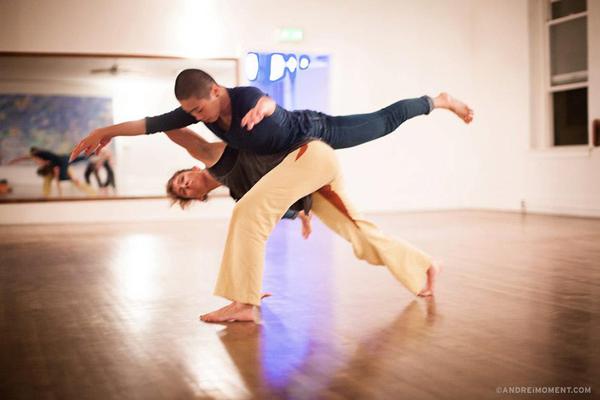
Dance is excellent for increasing flexibility - and strength
Distinguish between flexibility of your muscles and laxity in your ligaments. This is a big one, folks! Flexibility in appropriate muscles is terrific; laxity in your ligaments is not! Ligaments are a type of connective tissue that connect bones and cartilage in your joints and provide stability to the skeleton. Overstretched ligaments become too loose to hold your joints together under pressure or tension. People with lax shoulder ligaments, for example, can sometimes dislocate and “pop” their shoulders back in too easily. People with lax ligaments in their spinal column are able to round their spines excessively.
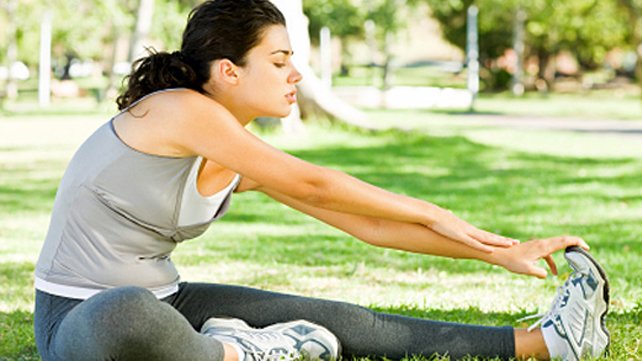
This common approach to stretching the hamstrings, done poorly, causes laxity in spinal ligaments
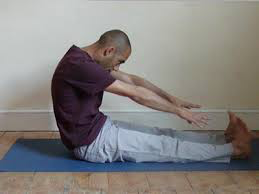
This person would be better off lying on his back and raising one leg at a time to stretch out his very tight hamstrings
Do you have any favorite stretches? Please share them with us! We can then talk about pro's and con's for the stretches you share.

Comments
I love the advice given at nr
I like making up poses that
I like making up poses that stretch and strengthen what my body is asking for on a particular day. Here's a favorite that's difficult but worth building towards:
The base is a leaning forward arabesque like on page 213e. The arms are swirling snake arms like this (though I like to have my descending arm externally rotated with the palm facing upward:
Snake arms: I like to have the descending arm be externally rotated with the palm facing upwards
On a good day I use my standing foot to pivot myself around, a little bit at a time. On a really good day, I do it in both directions.
Another way to look for effiicient exercise is to look at traditional activities - martial arts, sports - if the activity has been around for a century or more, it has likely been "vetted" for healthy posture. You may still need to add some extra filters, considering some of us are still reconstructing ourselves and can't immediatley jump into vigorous traditional activities (like gyating the head around in circles the way many African dancers are able to do.)
As a little history, I have
Sorry to hear you have had so
Sorry to hear you have had so many challenges with your back.
Scapular retraction is fine to do, but protracted scapular retraction is not the way to get your shoulders to align more posteriorly. You need shoulder rolls for that. Periodically strengthening the rhomboids is a good thing, but holding that position for extended periods is fatiguing for the muscles and can inflame the attachment points of the rhomboids.
For abdominal stengthening, we teach to not send the navel back towards the floor (that just flattens the lumbo-sacral angle); it's the back of the rib cage you want to send backwards. I also don't agree with the squeezing your buttocks to tuck your pelvis direction - that's another way to flatten your lumbosacral angle and detroy the wedge-shaped disc at that level. I speak from my personal experience...
Do an intial consultation with one of our qualified teachers - you'll learn a lot.
Comments and photos from
Comments and photos from Alessio Rubele:
"In some ancient sports I can see people training on a regular basis with positions requiring shoulders pushed forward and hypercifotic spines"
"the top athletes, like our fantastic Yuri Chechi are performing at the olympics some extreme position,
it seems it's a line between what human body CAN do to reach a peak performance, and what is HEALTHY to do"
Add New Comment
Login to add commment
Login